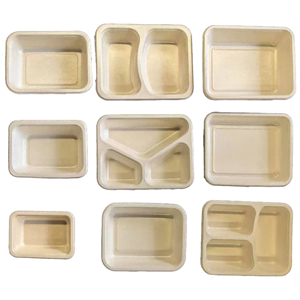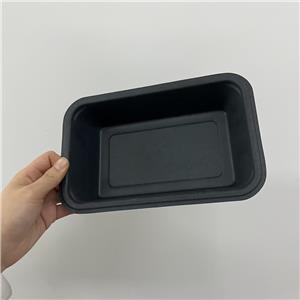The Evolution of Disposable Food Containers: From Convenience to Climate Allies
Disposable food containers have long been the unsung workhorses of modern life, dutifully ferrying office lunches, holiday leftovers, and guilty-pleasure takeout. But as sustainability takes center stage, these humble vessels are undergoing a quiet revolution—one that swaps environmental guilt for compostable grit.
The Problem with ‘Forever’ Containers
Traditional disposable containers fall into three categories, each with its own ecological asterisk:
Plastic Persistence
Derived from fossil fuels, petroleum-based containers can linger in landfills for up to 500 years. Their party trick? Shedding microplastics into ecosystems while resisting decomposition like a stubborn houseguest.Styrofoam’s Staying Power
Polystyrene foam, while lightweight and insulating, is notoriously difficult to recycle. When exposed to heat, it may leach chemicals—a less-than-ideal pairing with your reheated ramen.The “Biodegradable” Mirage
Some plant-based containers wear eco-friendly labels but contain plastic linings or chemical coatings, rendering them incompatible with backyard compost bins.
“The food industry’s reliance on single-use plastics is like using a chainsaw to slice bread,” notes Dr. Elena Torres, a materials scientist at GreenTech Innovations. “Effective, but wildly disproportionate to the problem.”
Next-Gen Containers: Where Function Meets Fungi
Innovators are reimagining disposables using materials that balance practicality with planetary courtesy:
🌱 Bagasse (Sugarcane Pulp)
A byproduct of sugar production, bagasse molds into sturdy containers capable of withstanding boiling soups and microwave blasts. Unlike plastic, it decomposes in 60 days—a sprint compared to plastic’s centuries-long marathon.
🌽 PLA (Polylactic Acid)
Derived from corn starch, PLA containers mimic plastic’s durability but break down in commercial composting facilities. Their Achilles’ heel? They require specific conditions to decompose, underscoring the need for improved waste infrastructure.
🍄 Mycelium Packaging
The avant-garde option: containers grown from mushroom roots. These biodegradable units, cultivated in labs, dissolve harmlessly in soil within weeks. Bonus: They look like something straight out of a sci-fi pantry.
Why the Shift Matters
The global food container market, valued at $121 billion in 2023, is a key player in the plastic pollution crisis. Consider:
40% of plastic produced annually is single-use, much of it food-related.
Compostable alternatives could divert 78 million tons of waste from landfills by 2030 (UNEP).
“This isn’t just about containers,” says chef-turned-activist Marco Lin. “It’s about redesigning our relationship with convenience.”
The Hitch? Cost and Confusion
While eco-containers have dropped in price by 30% since 2020 (Forbes), they still cost 10-15% more than conventional options. Consumer confusion also persists: A 2023 survey found 61% of Americans mistakenly toss compostables into recycling bins, contaminating waste streams.
“Education is as critical as innovation,” asserts Clara Nguyen of the Zero Waste Consortium. “A compostable container in a landfill is just a missed opportunity.”
The Road Ahead
Policy shifts are accelerating change:
EU Directive 2025: Bans single-use plastics in food service.
California’s SB 54: Mandates 100% compostable or recyclable packaging by 2032.
Meanwhile, startups like EcoVessel and RootBoard are partnering with restaurants to pilot reusable container programs—think “milkman model,” but for pad thai.
A Spoonful of Humor Helps
As consumers navigate this shift, a little levity goes a long way:
On mycelium containers: “Finally, a way to say ‘I compost’ while sounding like a Marvel villain.”
On PLA’s composting needs: “It’s not high-maintenance; it’s just selectively biodegradable.”
On Styrofoam bans: “RIP to the material that insulated both our coffee and our climate guilt.”
The Bottom Line
Disposable food containers are no longer just a vehicle for burritos—they’re a test of humanity’s ability to innovate responsibly. As Dr. Torres quips, “The goal isn’t to eliminate disposables. It’s to ensure they disappear when we’re done with them.”
After all, even takeout deserves a sustainable encore. 🌍♻️
Sources: United Nations Environment Programme (2023), GreenTech Innovations whitepaper, Zero Waste Consortium survey data.




